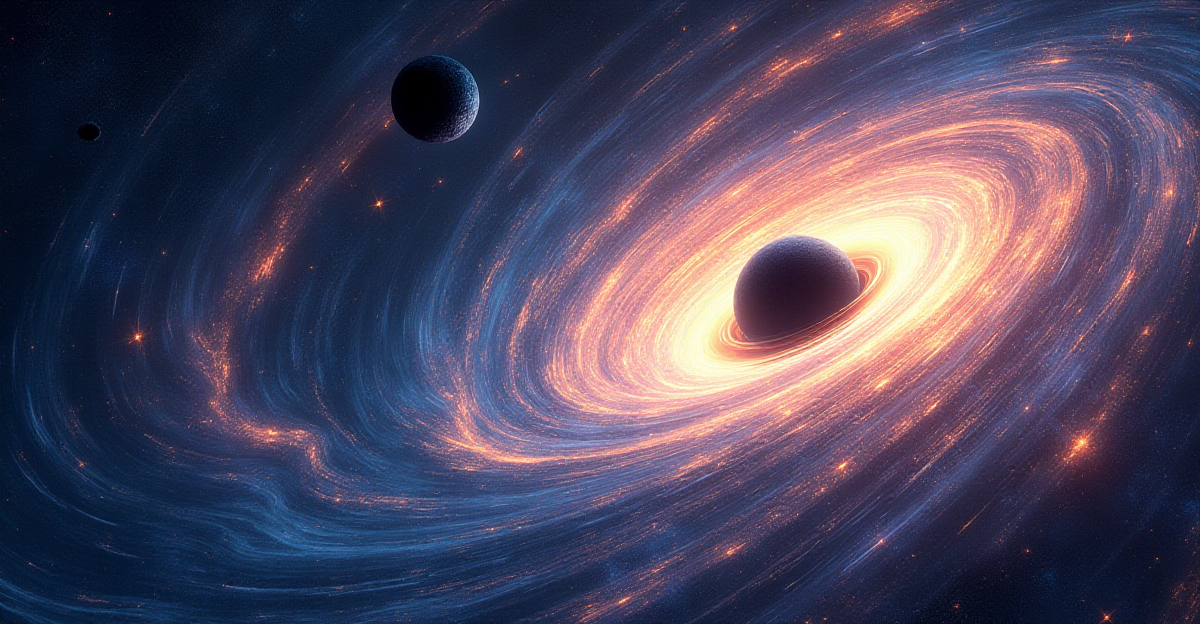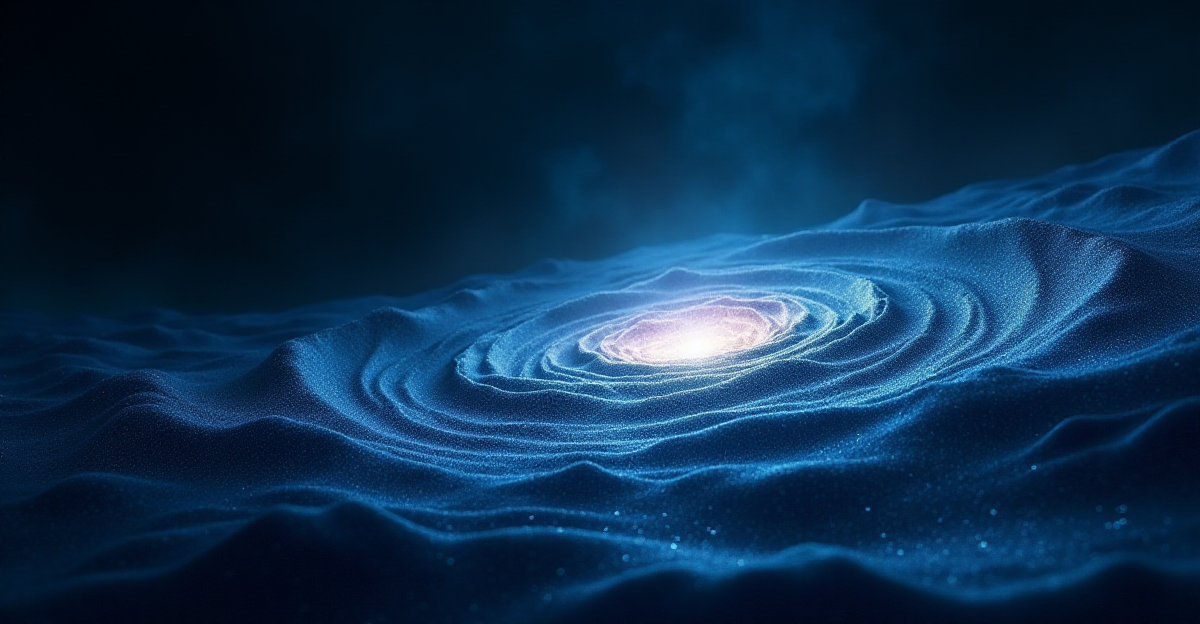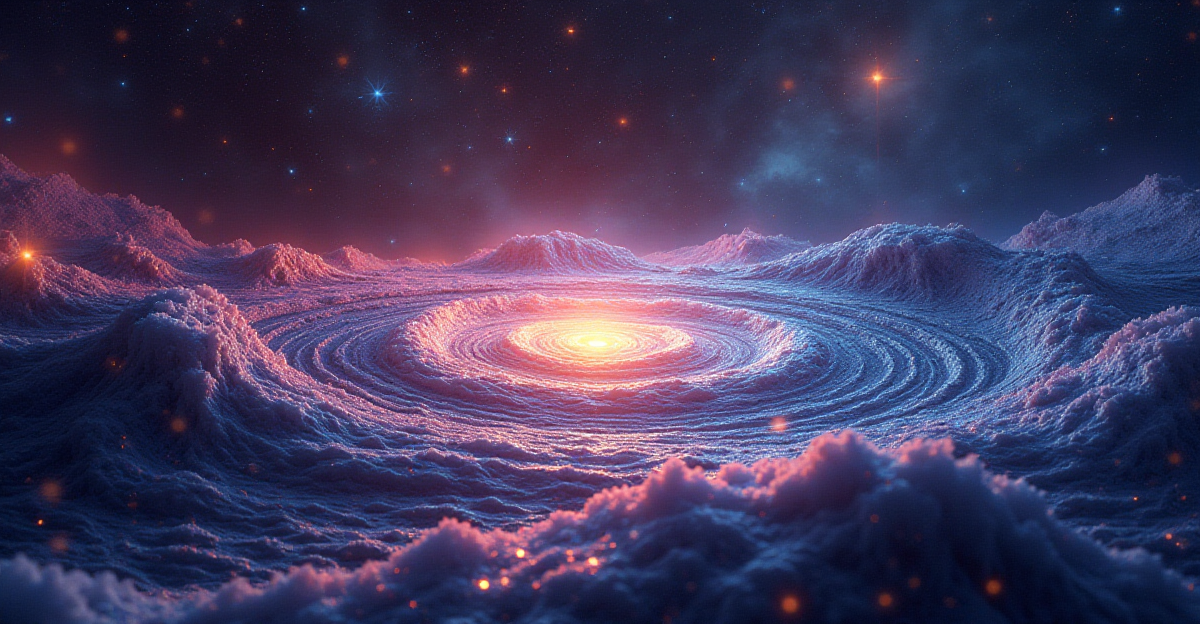LIGO confirmed gravitational waves, vibrations in the fabric of spacetime resulting from some of the most violent events in the universe, therefore providing a fresh avenue for cosmic observation. This essay guides you through the enormous discovery of these waves, my analysis of how this knowledge felt like listening to the pulse of history. We will go over their detection technologies, what these waves reveal about black holes and neutron stars, and future directions including space-based detectors. Through this new sense, gravitational hearing, this story seeks to capture the thrill of cosmos exploration.
Table of Contents
- Listening to the Symphony of the Cosmos: The Science of Gravitational Waves
- Listening to the Symphony of the Cosmos: The Science of Gravitational Waves
- The Future of Gravitational Astronomy
- Extra’s:
Listening to the Symphony of the Cosmos: The Science of Gravitational Waves

Imagine yourself able to hear the cosmic symphony of the universe playing in the far distance. This is the reality of gravitational waves, ripples in the fabric of the universe, or spacetime, as we prefer to term it, not only a lyrical picture. Like black hole mergers and supernova explosions, these waves are evidence of the most destructive and powerful phenomena occurring in the cosmos. Our knowledge of the universe was predicated only on the light and other forms of electromagnetic radiation released by celestial objects until gravitational waves were identified. Still, gravitational waves provide a whole fresh approach to listen to the universe.
Allow us to somewhat turn back. Imagine you could see “spacetime’s warp and bend in fabric form. Like a big ball dropped on a trampoline, these distortions are brought about by large things traversing the universe. “Gravitational waves” are essentially this. These huge objects generate ripples in “spacetime,” just as a big ball would on a trampoline. Imagine two large black holes colliding and “spacetime” rippling like a pond. These ripples are the “gravitational waves” carrying details on the most dramatic occurrences in the universe.
A New Way to Listen to the Universe
Imagine you could hear the slightest whisper from across the universe—a whisper bearing knowledge about the most dramatic events in the cosmos. This is the capability of “gravitational wave astronomy”. These waves give details regarding the most spectacular occurrences in the universe. Uncovering these cosmic secrets was mostly dependent on scientists at the Laser Interferometer Gravitational-Wave Observatory (“LIGO”). This observatory detects the smallest distortions in “spacetime” generated by passing gravitational waves using a network of very sensitive detectors placed deliberately in various locations around the globe. Consider it as a massive ear tuned to the melody of the cosmos.
The Future of Gravitational Wave Astronomy
Finding “gravitational waves” has ushered in a fresh phase in astronomy. Launched as a space-based detector, the Laser Interferometer Space Antenna (“LISA”), will enable us to probe even more into the cosmos. LISA is meant to be even more sensitive than LIGO so that we may find gravitational waves from far-off sources and a larger spectrum. Imagine being able to hear the murmurs of the early cosmos, or the mergers of supermassive “black holes” far bigger than the black holes LIGO finds. “Gravitational wave astronomy” has an intriguing future.
“Gravitational wave astronomy” has quite bright future prospects. It’s a fresh view of the cosmos that lets us investigate it hitherto unheard-ofly. Consider it as a fresh instrument enabling us to solve the most important riddles of the cosmos, including “dark matter and dark energy. Gravitational waves” are transforming our knowledge of the cosmos, much as a new musical instrument gives a symphony fresh dimension. We are only starting to discover this new cosmos of sound, hence the revelations ahead will be absolutely amazing.
Listening to the Symphony of the Cosmos: The Science of Gravitational Waves

Imagine being able to hear the universe rather than merely see it. What sounds like you? The murmurs of far-off “black hole mergers, the explosive explosions of supernovae,” and the buzz of the universe’s early years? Though human ears cannot hear these noises, scientists are learning to listen to them via “gravitational waves, vibrations in the fabric of spacetime.” Carrying knowledge about some of the most violent and dramatic events in the universe, these waves move at the speed of light.
Unlocking the Universe’s Secrets
Our knowledge of the universe was constrained before gravitational waves were discovered to what we could see with telescopes. Though they cannot see everything, telescopes catch light and other types of electromagnetic radiation, offering a view of the universe. Like a new kind of telescope, “gravitational waves let us listen to the sounds of the universe”. Imagine it as though gravitational waves are our ears, hearing the cosmos, while telescopes are like our eyes, seeing it.
Using the Laser Interferometer Gravitational-Wave Observatory (LIGO), researchers created history in 2015 when they first detected gravitational waves. This remarkable finding validated Albert Einstein’s general relativity theory, which foresaw the presence of these waves. It also offered indisputable proof of black hole existence—that is, things so dense light cannot escape their gravity. For the scientific community, this was a historic event and the discovery delighted the researchers. It was like opening a fresh window into the cosmos exposing a whole fresh set of secrets.
The Sounds of the Universe
The discovery of gravitational waves marks a new chapter in astronomy and makes it feasible for us to investigate the universe in hitherto unattainable manner. These waves are revealing hitherto unheard-of insights that let us investigate cosmic occurrences in great detail and deepen our knowledge of the basic principles of the cosmos. 2017 saw one of the most fascinating revelations when LIGO found gravitational waves emanating from two neutron star collisions. From Earth, the occasion produced a strong flash of light.
Finding these waves has altered our knowledge of the cosmos. These days, we may examine “cosmic events including black hole mergers, supernovae,” and the early cosmos in a completely fresh perspective. Astronomy is at an exciting period; as we keep exploring the universe via the sounds of gravitational waves, the future promises many more discoveries.
The Future of Gravitational Astronomy

See spacetime as an expansive, elastic sheet. Massful objects produce ripples in this sheet that we refer to as gravitational waves. Like whispers from the early universe, these waves are transforming our knowledge of the cosmos. They let us “hear” cosmic events in a way never possible with conventional telescopes.
Listening to the Universe’s Symphony
Actually, how do we “hear” these gravitational waves? Using very sensitive detectors like LIGO and Virgo, scientists find minute variations in spacetime’s fabric brought about by these waves. Consider them as enormous kings with sensory ability for even the slightest stretch or squeeze.
Separated thousands of kilometers, two detectors in the United States make up LIGO, the Laser Interferometer Gravitational-Wave Observatory. These detectors gauges the distance between mirrors positioned at the ends of long, evacuated tubes using lasers. A gravitational wave passing Earth stretches and squeezes the spacetime around the detectors, changing the distance between the mirrors. LIGO can find gravitational waves by carefully gauging these variations.
Unlocking the Universe’s Secrets
The possibility to solve some of the biggest secrets of the cosmos makes gravitational wave astronomy one of the most fascinating fields of research. For instance, researchers think gravitational waves could shed important light on the existence of “dark matter and dark energy,” basic riddles in the cosmos. Understanding the behavior of “pulsars,” fast rotating neutron stars that release beams of radiation, requires also the use of gravitational waves. These heavenly bodies are amazing laboratories for investigating the basic rules of physics because of their great density and strong magnetic fields.
Ground-based detectors of today, such as LIGO, have already achieved revolutionary findings including the identification of gravitational waves from the collision of two big black holes. Two large black holes colliding releases a lot of energy that causes ripples in spacetime we can currently sense. This enables us to investigate these occurrences in great detail, therefore offering important new insights on black hole creation and evolution.
Gravity wave astronomy has bright future prospects. Designed as a space-based observatory, the Laser Interferometer Space Antenna (LISA) will be able to find gravitational waves from significantly further distances and over a larger frequency spectrum. For the field, it will be a paradigm-shifting tool providing a better knowledge of the universe and maybe exposing even more spectacular events.
Extra’s:
If you are interested in exploring the fundamental nature of light and matter, you might find our post on “Wave-Particle Duality: The Dual Nature of Light and Matter” fascinating. This post delves into the intriguing concept that light and matter exhibit both wave-like and particle-like properties, a concept that is crucial to understanding the universe at its most fundamental level. Similarly, to understand the complexities of gravitational waves, it’s helpful to comprehend the behavior of fluids that defy the laws of Newtonian physics. Our post “The Weird World of Non-Newtonian Fluids” provides an engaging exploration of these unusual fluids, highlighting their unique properties and applications.
For a deeper dive into the exciting world of gravitational wave research, you can explore the official website of the “GWADW2024 – Home” conference. This website provides a comprehensive overview of the latest advancements in gravitational wave detection and analysis, including presentations from leading researchers and details on the latest discoveries. To delve into the theoretical underpinnings of gravitational wave physics and astronomy, a comprehensive review article published in “Annalen der Physik: Vol 536, No 2” titled “Gravitational Wave Physics and Astronomy: Annalen der Physik: Vol 536, No 2 Astronomy” offers a detailed exploration of the field, covering topics such as the theoretical framework, experimental techniques, and potential astrophysical applications.












2 thoughts on “Ripples in Spacetime: The Discovery of Gravitational Waves”